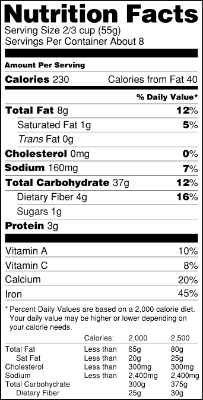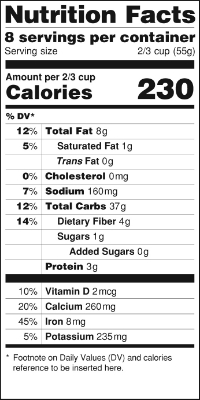Uh oh...here comes cookout season!
Mario Moore
This past weekend, it stopped raining just long enough for us to realize that cookout season is upon us and summer is right around the corner! Barbecue chicken, ribs, pork chops, mac-n-cheese, potato salad, corn on the cob, baked beans--you know and love the menu! You’ve been working hard all winter and spring to get summer ready, now all of these cookouts don’t want you to be great. After struggling through this Memorial Day, inaugural cookout weekend, I realized that I need to prepare better for these things. Rather than zeroing in on the vegetable options, I thought about some of the other areas where I struggle most at these kinds of events and offered some techniques to deal with these situations.
Chips, the crunchy space filler. You’re hanging out waiting for the food to really be done and you spot the chips on the far end of the table, so you load up a plate or two just to have something to munch on while you are teased by all the delicious smells. They might be tasty but those empty calories are worth the space they take up. Instead look to healthier snacks while you wait.
Scope it out: A little salad can make a great pre-dinner snack. Look for salads that are actually salads and don’t just have salad in the name. Think Garden Salad with raw vegetables for the snack and have smaller amounts of the potato or pasta salad with your meal.
Bring your own: Bring some veggies for your self to snack-on. Carrots, peppers and celery are great crunchy snacks that can be eaten raw or you can ask the chef to toss them on the grill.
Bring some for everybody: Bring a dip! Fresh Salsa or bean dip will add levels to the chip station and you’ll feel less guilty about inhaling the two handfuls while you wait.
Wait for the lean meats. Burgers, dogs, and sausages seem to be the most popular items at the cookout. As quickly as they are up, they are gone. Unfortunately, these options are also highest in unhealthy fats. Lean, grass fed cuts of beef or pork would be ideal since they have higher ratios of healthy fats and other nutrients. If that’s not an option for you, wait a little longer for the chef to grill up leaner options like chicken or fish.
Scope it out: Talk to the chef. If it’s appropriate, ask the chef about their meat choices. Listen for loin or round in the name to determine if it’s a lean cut of meat. Talking to the chef might also get you to the front of the line when they pull the chicken or fish off the fire.
Bring your own: This may only be acceptable at a close family cookout but bring your own meat. You know what quality and cuts of meat you like, just remember to bring enough for the chef!
Bring some for everybody: Marinate chicken breasts overnight. Opting for a marinade instead of a bottled barbecue sauce can add flavor to the chicken without sacrificing calories.
Cakes and pies, I do despise! Just sitting there looking all delicious and inviting...the desert table is the easiest place to lose all of your shit. It was hard enough avoiding (only having a little of) Big Mama’s Mac-n-Cheese but that caramel cake at the other end of the table is looking real delectable. Fight the urge a bit longer and reach for the more fresh option to curb your sweet tooth.
Scope it out: Find a cup and head straight for the fruit salad. Fruit salads are not just for the kids! Scoop out some fresh berries for that after dinner treat.
Bring your own: Bring a couple of apples or oranges and leave them in the car. You never know when you’ll need to make an emergency trip because the options are looking a little bare.
Bring some for everybody: Share the joys of grilled fruit with everyone. Pineapple, apples, and watermelon are delicious options to throw on the grill.
Alternate between alcoholic drinks. Through all the socializing, good food, and flowing drinks, it’s important to remember to stay hydrated. A great exercise is to have a glass of water for every alcoholic beverage you have. This will reduce both the calories you consume and the chances of being beaten by the summer heat.
These are some of the pitfalls that I run into. Every event and menu is different, so I’m always adjusting my approach to maintaining healthy eating habits. I never want to be rude or come off as arrogant, so it’s important for me to figure out ways for me to navigate food choices that might be out of my control. I hope these tips help you out this summer. Don’t hesitate to share your feedback.
Got some recipes we should try out? Let me know how you stay healthy during cookout season!
Eat to live. Live to be.
B. Bowden













